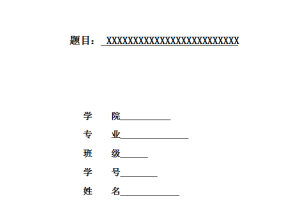摘 要
自从2008年以来,国内电子商务呈现爆炸式迅速增长。据波士顿咨询公司发布的《中国数字化新世纪3.0》报告预测,2015年中国网购用户将达到1.7亿个,近10%的零售交易将在网上进行。而且伴随着科技的进步和发展,电商企业之间的竞争开始向物流领域进军。目前,主流的电商如京东商城、1号店等斥资动辄十几亿甚至近百亿自建物流,而且马云也开始高调宣布成立菜鸟网络,带领阿里巴巴大举进军物流行业。本文就是以国内主流电商企业京东商城和淘宝网为例,比较分析它们的物流管理体系,阐述了京东商城自建物流体系以及淘宝网的推荐物流模式,发现其中存在的问题并提出相应的解决举措,最后得出结论,希望能为业界提供有益的借鉴。
关键词 京东商城 淘宝网 自建物流 推荐物流
Since 2008, the domestic e-commerce explosive growth. According to the Boston consulting group released “predicts China digital 3.0 in the new century” report, Chinese online users will reach 170 million in 2015,almost 10% of the retail trade will take place on the Internet.And along with the progress and development of science and technology, electronic commerce began to march to the logistics field.At present, the mainstream of electricity, such as Jingdong Mall, 1st Store for quick billions or even billions of self-built logistics, and Mr. Ma also began to announce the formation of novice network, leading Alibaba big push into the logistics industry.This article is taking domestic mainstream electric business TaoBao and Jingdong Mall as an example, analyzes the comparison of their logistics management system, and expounds the self-built logistics of Jingdong Mall system and recommend logistics mode of TaoBao , finds that there were problems, and puts forward the corresponding solution measures, finally to come to a conclusion, hoping to provide some useful reference for the industry.
Keyword Jingdong Mall TaoBao self-built logistics recommend logistics
目 录
Abstract………………………………………………… II
1.1 本课题研究的目的及意义………………………………. 1
1.3 本课题主要研究内容………………………………….. 5
2.1 企业物流管理的概念………………………………….. 6
2.1.1 企业物流管理的定义…………………………….. 6
2.1.2 企业物流管理的基本特征…………………………. 6
2.2.1 企业物流业务外包概念的提出……………………… 6
2.2.2 企业实施物流业务外包的原因……………………… 7
2.3.2 第三方物流与电子商务关系……………………….. 8
第3章 电商企业物流管理现状………………………………. 10
3.1 电商行业物流的概述…………………………………. 10
3.1.1 电子商务的定义……………………………….. 10
3.1.2 电商行业物流的特点……………………………. 10
3.2 京东商城物流管理现状……………………………….. 11
3.2.1 京东商城整体物流概况………………………….. 11
3.2.2 京东商城物流服务简述—211限时达………………… 11
3.3 淘宝网物流管理现状…………………………………. 12
3.3.1 淘宝网整体物流概况……………………………. 12
3.3.2 淘宝网物流服务简述—推荐物流………………….. 12
3.4 自建物流体系&推荐物流………………………………. 13
第4章 电商物流管理存在的问题及对策研究…………………… 15
4.1 电商物流管理存在的问题……………………………… 15
4.1.1 自建物流体系不够完善………………………….. 15
4.1.2 第三方物流配送力度不足………………………… 15
4.1.3 物流服务控制能力有限………………………….. 16
4.2 电商物流管理对策研究……………………………….. 17
4.2.1 适度化开展自建物流体系………………………… 17
4.2.2 加大与第三方物流的协调度………………………. 18
4.2.3 提高物流服务的满意度………………………….. 19
第5章 电商物流管理未来发展趋势………………………….. 20
5.1 物流业务外包合理化…………………………………. 20
5.2 电商物流社会化…………………………………….. 20





